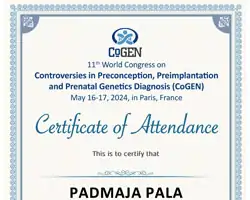- @NGRI Metro Stn, Piller No: C-964, St No: 7,
Habsiguda, Hyderabad - 500 007, TS INDIA.
Bhargavi PRO (Telugu, English, Hindi)
+91-76610 86644Admin / PRO (Telugu, English, Hindi)
+91-76610 17755Pro's IUI/IVF/ICSI (Telugu, English)
+91-76610 58800Divakar Reddy (CEO) (Telugu, English, Hindi)
+91-98483 43244SINDHU (PRO) (English, Telugu, Hindi)
+91-79819 36828Get An Appointment
Semen Banking
Patrons Please Note:
Bhargavi PRO (Telugu, English, Hindi)
+91-76610 86644Admin / PRO (Telugu, English, Hindi)
+91-76610 17755Pro's IUI/IVF/ICSI (Telugu, English)
+91-76610 58800Divakar Reddy (CEO) (Telugu, English, Hindi)
+91-98483 43244Enquiry
| Total Cases Done | Successful | Success Rate |
|---|---|---|
0
|
0
|
0%
|
First Attempt Successful
| Total Cases Successful | First Attempts | First Attempt Success % |
|---|---|---|
0
|
0
|
0%
|
What is artificial Insemination with Donor sample (AID) or Donor Insemination (DI)? In as many as 30% of infertile couples the male is responsible for infertility. A significant percentage of these males do not father children despite various treatments including ICSI. The solution is AID or DI.
Who can benefit from AID?
1. AID (Artificial Insemination Dnr) is generally advocated for males with low sperm counts ( Oligozoospermia) or zero counts ( Azoospermia), where treatment with drugs, surgery and ART treatments like AIH, IUI and ICSI have proven unsuccessful. It is an acceptable alternative to adoption.
Is also suggested to males who may have a genetic disorder that could get transmitted to their progeny.
It may be used as a backup to the procedure of TESE ( Testicular Sperm Extraction) and ICSI that is done for males with non-obstructive Azospermia, Especially when no sperms are found in the testicular biopsy.
How is the Semen obtained in Semen Banking?
A donor donates the semen after he is screened and tested as safe for various infections such as HIV, Hepatities and other Venereal Disease. At Padmaja IVF Center, we test the donor for infections every 3 months, The semen thus obtained can be used in two ways:
1. Fresh Semen Insemination:
It is insemination where the donated semen is used within an hour of ejaculation. The semen can be placed on the cervix without processing or can be placed in the womb after processing as it is usally done with IUI. This is done commonly in India.
2. Frozen Semen From Semen Bank:
It is insemination where the donated semen is used within an hour of ejaculation. The semen can be placed on the cervix without processing or can be placed in the womb after processing as it is usally done with IUI. This is done commonly in India.
Which of the two is a better alternative?
The success rate of both fresh as well as frozen AID is almost similar, However in case of frozen thawed sample decreases rapidly within 12 hours, in contrast to fresh insemination, where the sperms stay alive in the body for 48-72 hours. However, the biggest advantage of frozen samples is its minimal risk HIV transmission.















